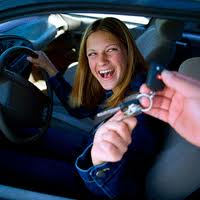“The Minnesota state government officially shut down all non-essential services on Friday, July 1st, 2011. The situation is eerily similar to what is presently occurring in Washington, D.C. Because the executive and legislative branches of government, at odds over spending and taxation, were unable to reach a budget compromise. While the kings and queens of the political chess board do battle, it is the pawns that are paying the price. In this case, the pawns are the citizens of Minnesota.
This has left the citizens with many questions regarding what government services will be provided and what services will not be provided during the Minnesota government shutdown. In particular, how the shut down relates to motor vehicle registration and licensing to drive. Because the law enforcement agencies in the state will still be operating and expecting to see the proper licenses and documentation for operating a motor vehicle on the state’s roadways.
The Department of Driver and Vehicle Services will not be operational during this shutdown. Kind of, sort of, well, they will to a degree. The computerized functions of the DVS will still be functioning. The data bases used by law enforcement will remain operational and online. The walk-in offices that fill the majority of citizens needs will not. The services that are taken for granted will for the most part not be fully available until the situation is resolved.
Drivers license renewals can be done by county Deputy Registrars. However, all that will be issued to those renewing a license will be paper documentation. That lovely photo that accompanies the laminated card will have to wait until the DVS offices statewide reopen.
Those reaching that magical age of sixteen expecting to apply for a drivers license will just have to wait. No new licenses will be issued because there will be no driving examinations given until the shutdown is ended. The same thing applies to new residents moving into the state. They will not be able to obtain a Minnesota drivers license either. The vendors that produce them are not working. You will just have to wait.
Another item that is worrying to motorists is renewing a license plate and registration on their vehicle. The good news is that as long as a local DVS office has a supply of them, residents and businesses will be able to obtain a new plate or tab and the requisite registration documentation.
The bad news is that while this shut down is ongoing, there will be no new registration of commercial motor vehicles. There will be no car inspections performed during this period either. You will just have to wait. The lack of new registration of commercial vehicle registration is of particular concern to businesses and individuals. The state employed inspectors are not working.
Commercial vehicles move people and commodities, providing a great many people with a job driving these vehicles. The fact that no new registrations will be issued until the conflict is resolved is of particular concern. Commercial vehicles are replaced on a consistent basis due to the wear and tear inflicted by the nature of the use of these vehicles. Taxi cab and tractor trailer fleets unable to be replaced and registered; the men and women who inspect these vehicles unemployed because there is no need for their services. You will just have to wait.
The effects of the longest state government shutdown in the history of the United States are just beginning to truly be felt. One thing everyone can agree on is that this a frustrating experience for all the citizens of Minnesota. This political impasse is costing the state millions in lost revenue. A cost that can only be calculated when it comes to an end.
But it is costing the state more than just revenue. The price of frustration and confusion, the price of confidence and trust in government are incalculable. Sadly, the cost to individual lives and business owners is calculable. They will just have to wait to total up the tab until after this chess match has been played.”
For more information, click here:
Minnesota Government shutdown FAQ










Recent Comments